Although there were a few not so nice days in May we mostly had great flying weather and many PAM members made the most of it. Of course the mix of warm sunshine and just very occasional showers meant the grass grew quickly and the patch needed quite a lot of attention so the big guns were brought out, both the club mowers instead of just the one!
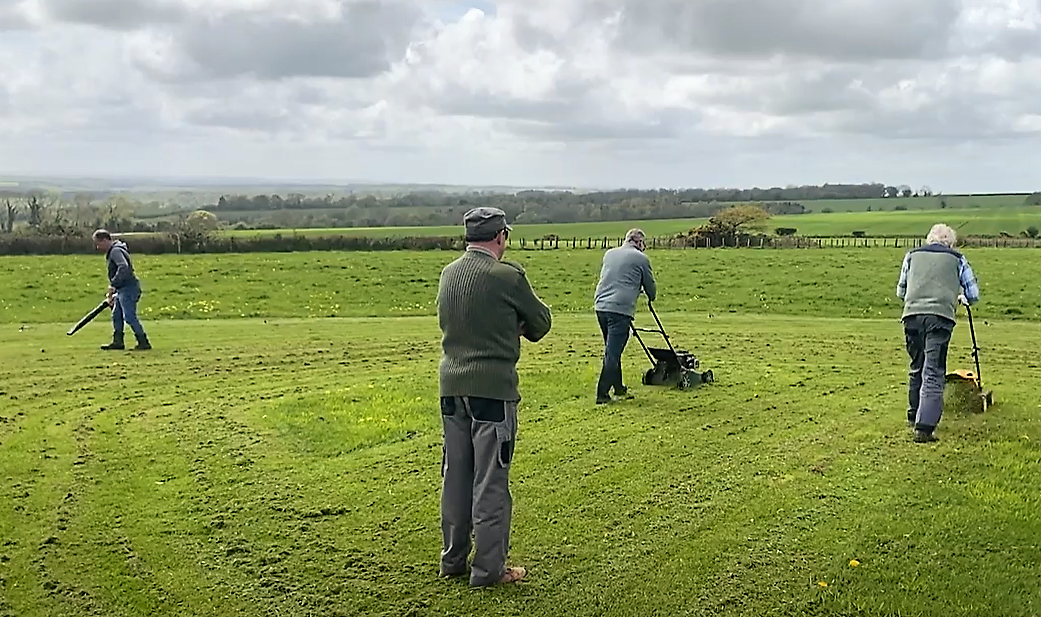 Also Woody brought along his leaf blower to help shift the grass cuttings and after being suitably supervised by Captain Slow the patch was soon back in near perfect condition.
Also Woody brought along his leaf blower to help shift the grass cuttings and after being suitably supervised by Captain Slow the patch was soon back in near perfect condition.
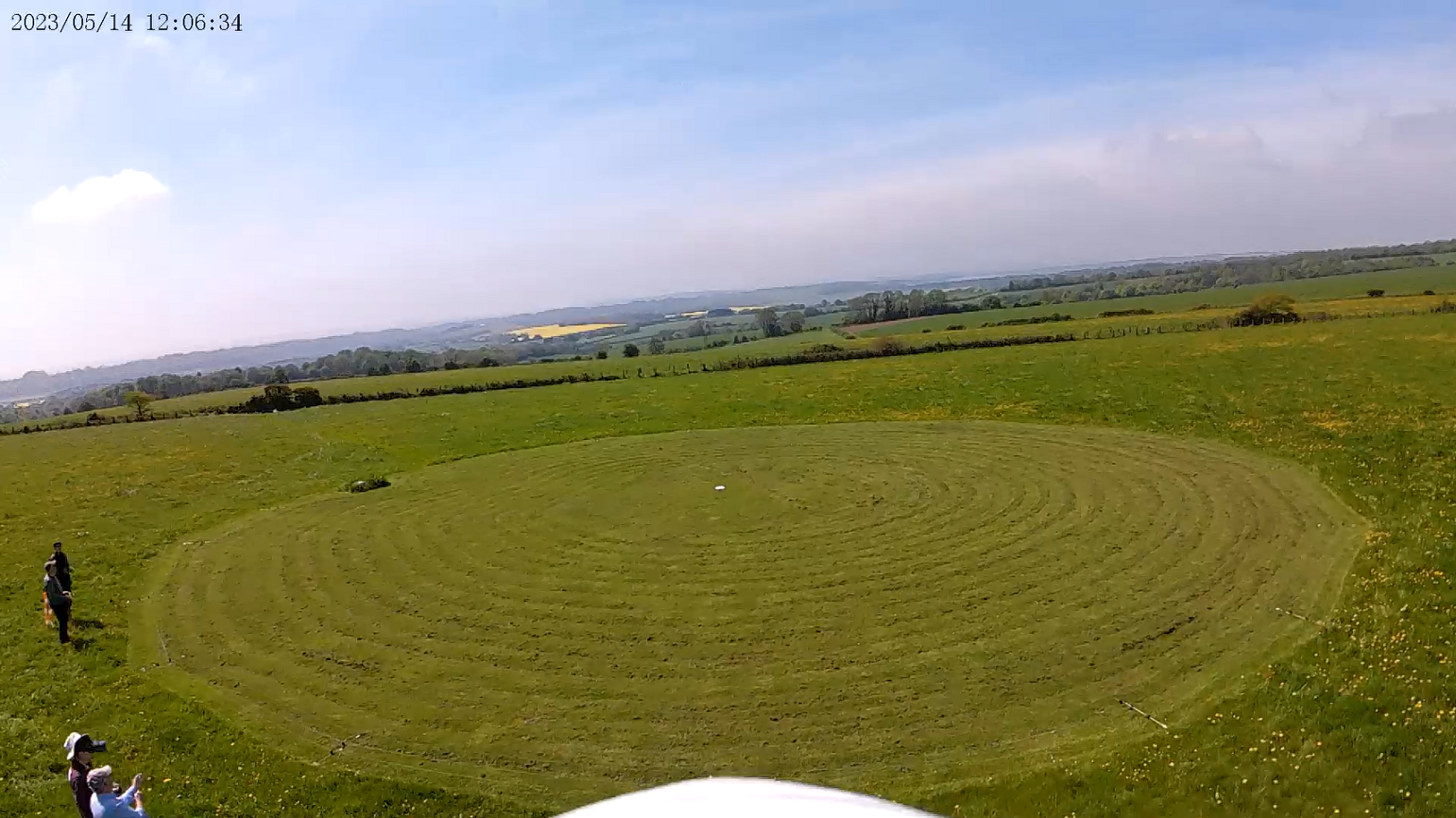 The field was used for car parking for the Sustainability Centre Green Fayre on 7th May so no flying was allowed and the electric fence was suitably adorned with red and white tape so none of the Chelsea tractors would drive right through it having failed to see it. Farmer George had previously said the bullocks would return soon after the Green Fayre but the grass (not the patch) had got very long so George decided to cut it for a crop.
The field was used for car parking for the Sustainability Centre Green Fayre on 7th May so no flying was allowed and the electric fence was suitably adorned with red and white tape so none of the Chelsea tractors would drive right through it having failed to see it. Farmer George had previously said the bullocks would return soon after the Green Fayre but the grass (not the patch) had got very long so George decided to cut it for a crop.
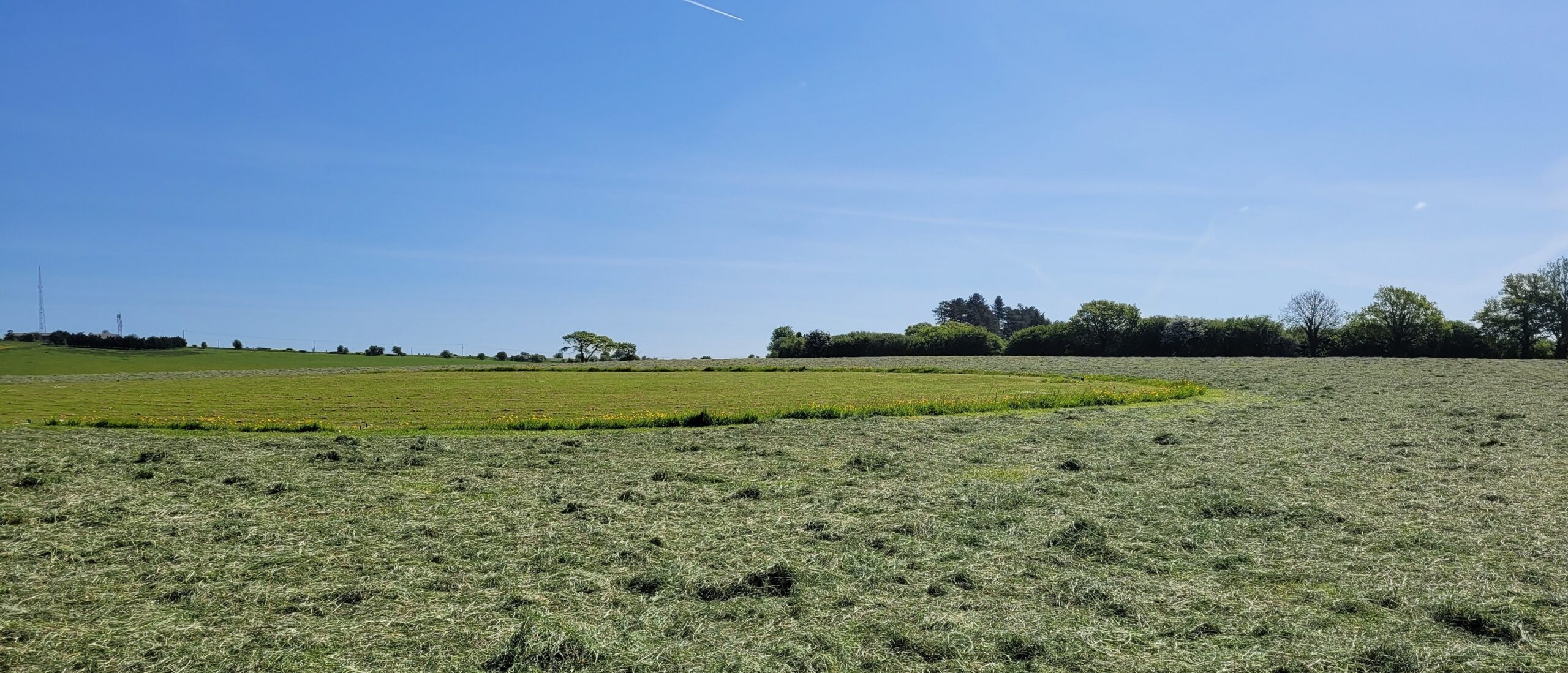 At the time of writing the cut grass is drying out in the glorious sunshine but will no doubt be baled and removed to the barn shortly, all good news for us as it means the whole field now has short grass and the bullocks won’t return for several weeks.
At the time of writing the cut grass is drying out in the glorious sunshine but will no doubt be baled and removed to the barn shortly, all good news for us as it means the whole field now has short grass and the bullocks won’t return for several weeks.
The main event of the month was the follow on from the 2022 BMFA Centenary Event during which 3109 models were flown at once at 263 flying sites across the UK in an attempt to set a world record for the number of models airborne at the same time.
It proved very popular so the BMFA decided to do it all again on 14th May this year. Unfortunately last year there was heavy rain at our field so the only plane that was able to qualify was Captain Slow’s RC Paper Plane which managed a brief flight in the barn!
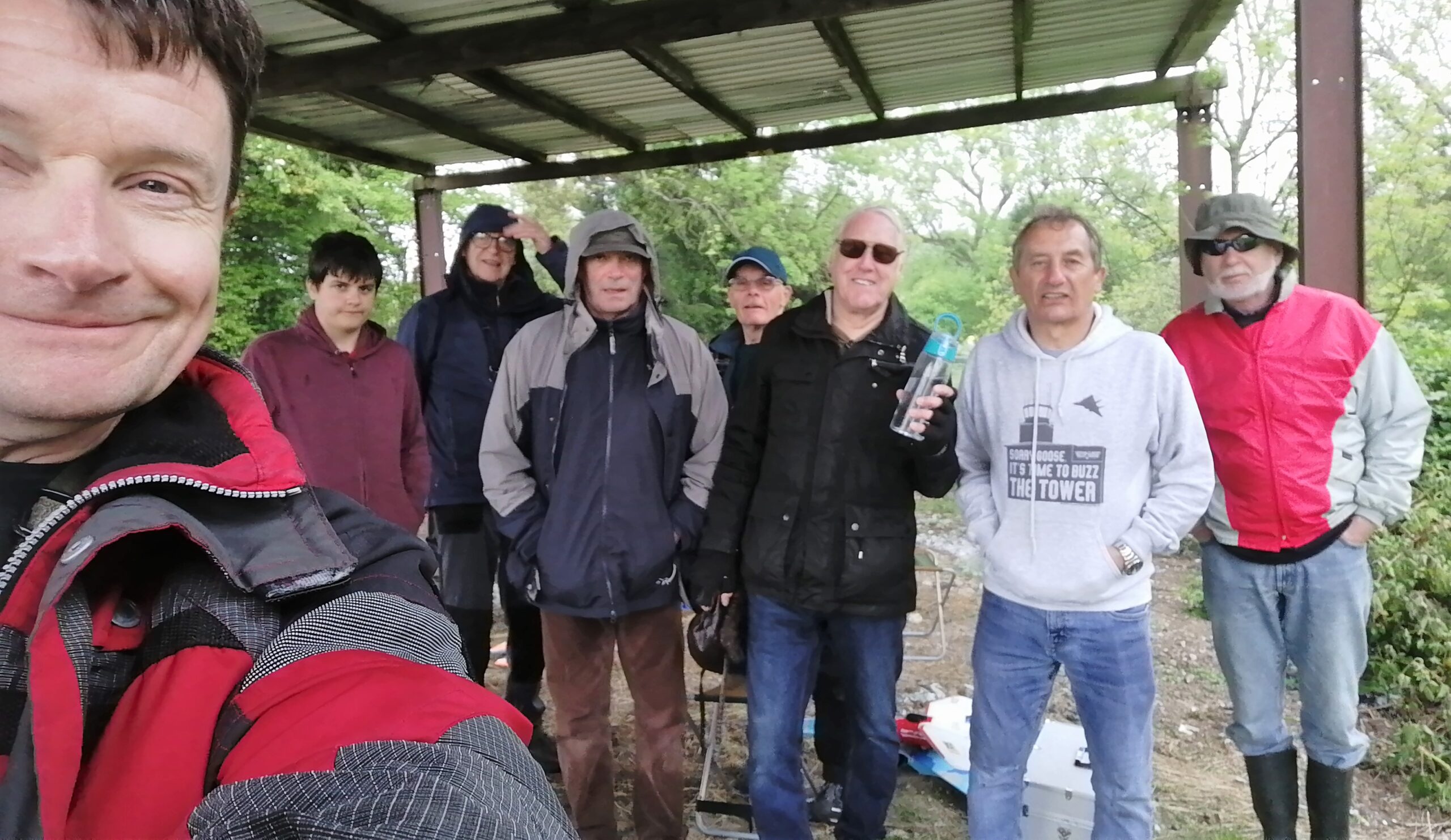 This year the weather was ideal and, as before, the idea was to have as many models in the air as possible at 12 noon. Chairman Gordon Bennett completed all the necessary paperwork for the BMFA and also wrote this report of the day for them:
This year the weather was ideal and, as before, the idea was to have as many models in the air as possible at 12 noon. Chairman Gordon Bennett completed all the necessary paperwork for the BMFA and also wrote this report of the day for them:
Sunday started cold and misty up at our site but we kept warm by virtue of the fact we needed to mow the grass! We have a 30m circular patch and with a couple of mowers cutting in ever-decreasing circles we had the job done very quickly, the members taking turns of a couple of circuits each. By this time the sun had broken through, the mist burnt off and the temperature rose rapidly. Conditions were perfect with light and variable winds, a complete change from last year when heavy rain scuppered our day.
 We had a great morning’s general flying, all models were electric-powered and one pilot flying FPV (with a trusted spotter). Around 11.45 general flying ceased as aircraft were prepared for the midday attempt. 12 pilots had come up for the attempt but one unluckily had a radio problem so we had a total of 11 aircraft in the air just before midday.
We had a great morning’s general flying, all models were electric-powered and one pilot flying FPV (with a trusted spotter). Around 11.45 general flying ceased as aircraft were prepared for the midday attempt. 12 pilots had come up for the attempt but one unluckily had a radio problem so we had a total of 11 aircraft in the air just before midday.
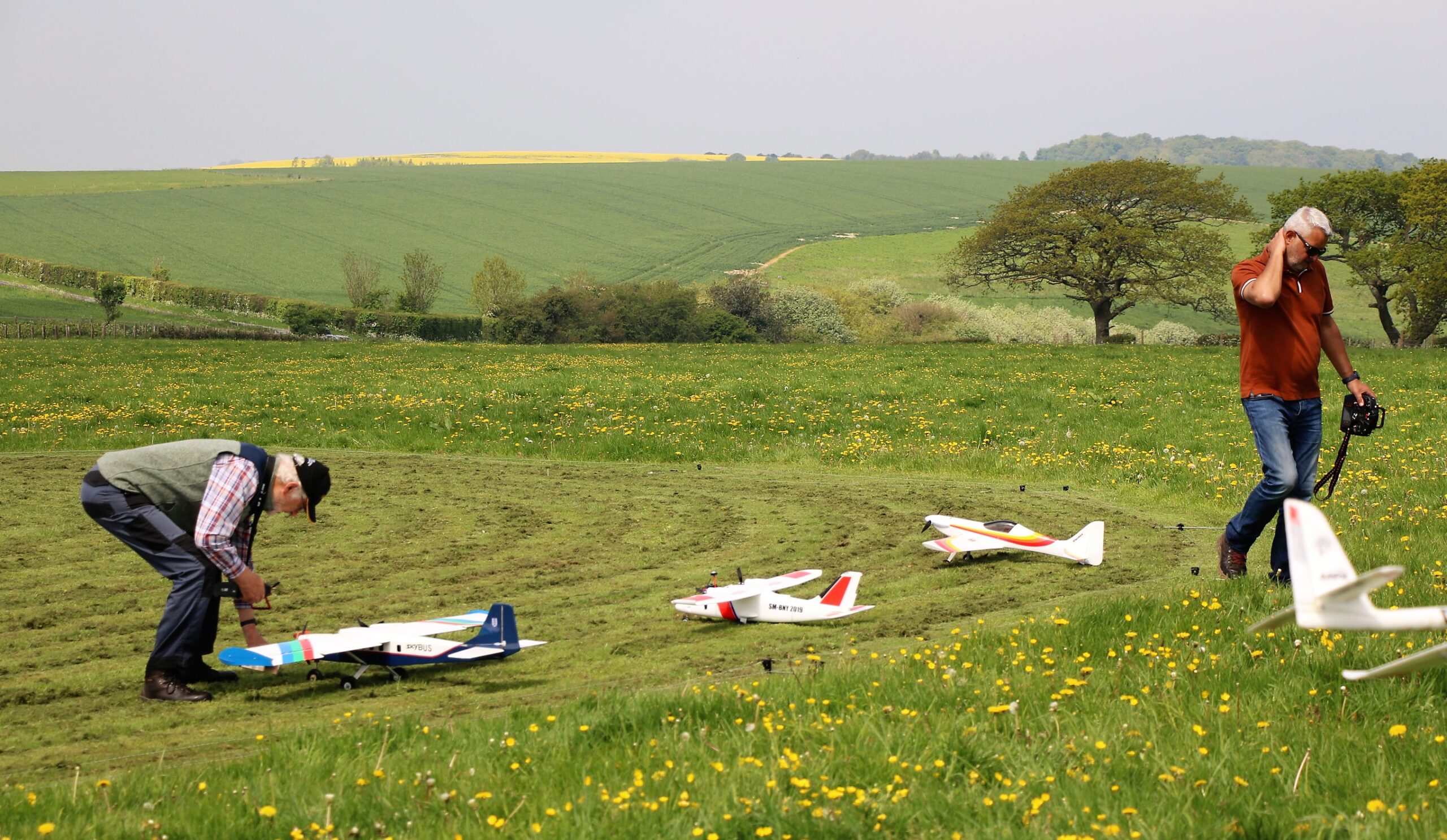
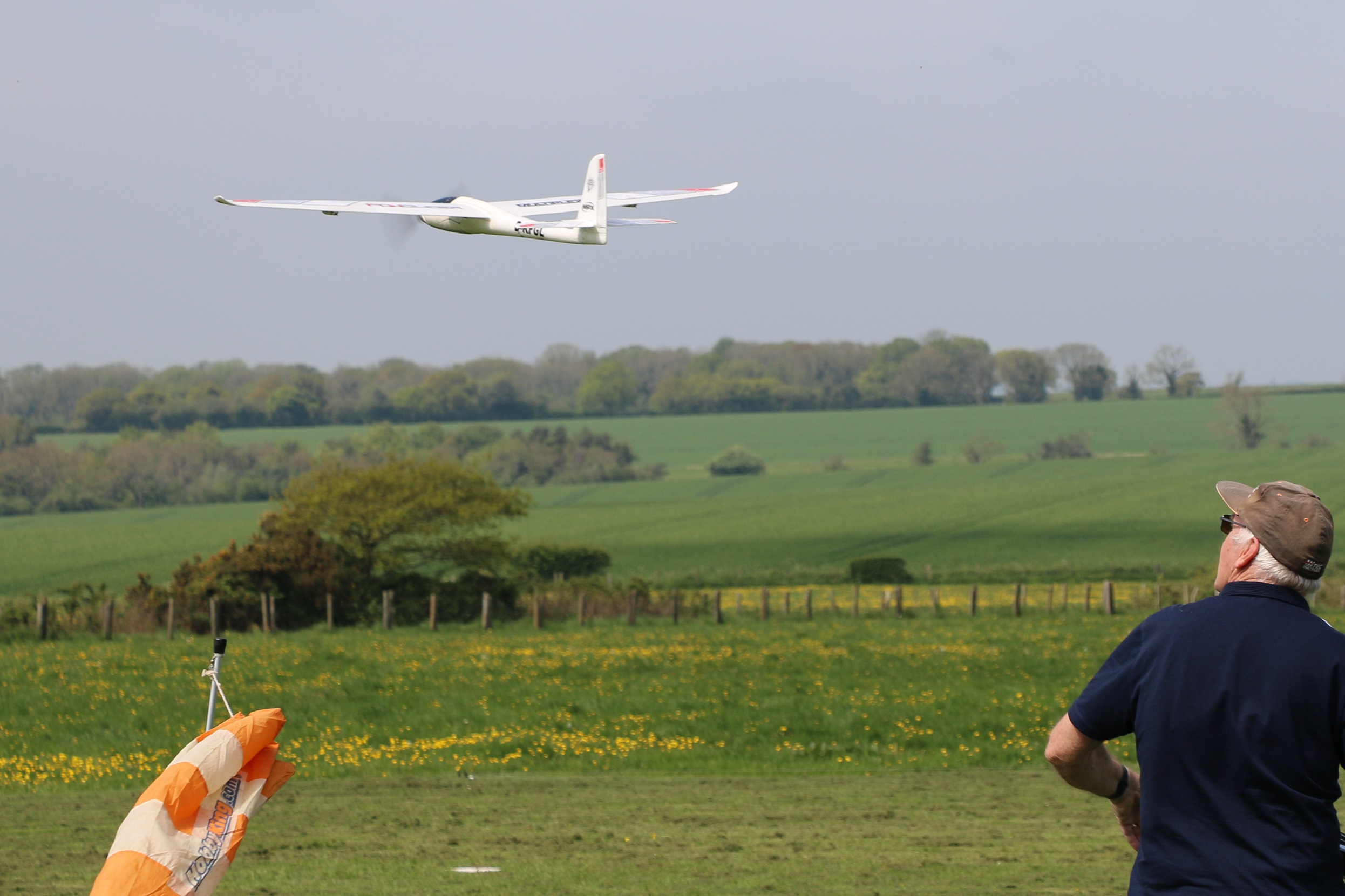 The fleet included motor gliders, foam boards, foamies, a couple of twins (both carrying video cameras) and two miniatures. Our site is in a beautiful rural location on the crown of a hill with views down to the Solent and Isle of Wight. We often have Red Kites joining us in the air as they take a bit of interest in what we’re up to. It would appear they were in on the deal as two Kites joined the circuit at the stroke of 12 and stayed for a couple of minutes, sadly I didn’t get the opportunity to get their BMFA membership details!
The fleet included motor gliders, foam boards, foamies, a couple of twins (both carrying video cameras) and two miniatures. Our site is in a beautiful rural location on the crown of a hill with views down to the Solent and Isle of Wight. We often have Red Kites joining us in the air as they take a bit of interest in what we’re up to. It would appear they were in on the deal as two Kites joined the circuit at the stroke of 12 and stayed for a couple of minutes, sadly I didn’t get the opportunity to get their BMFA membership details!
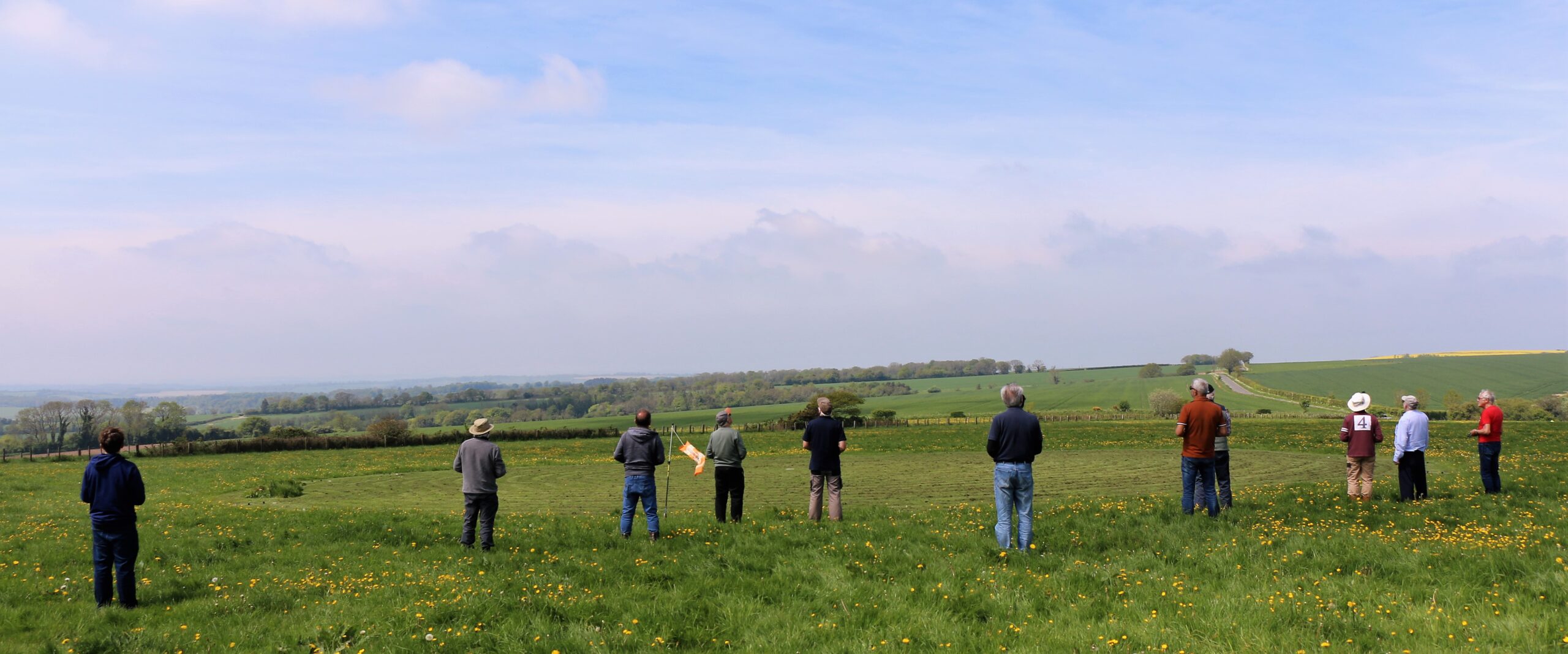 All aircraft got back safe and sound but the pilot of one of the motor gliders was off thermalling so had to be gently requested to land so that we could get the group photo.
All aircraft got back safe and sound but the pilot of one of the motor gliders was off thermalling so had to be gently requested to land so that we could get the group photo. 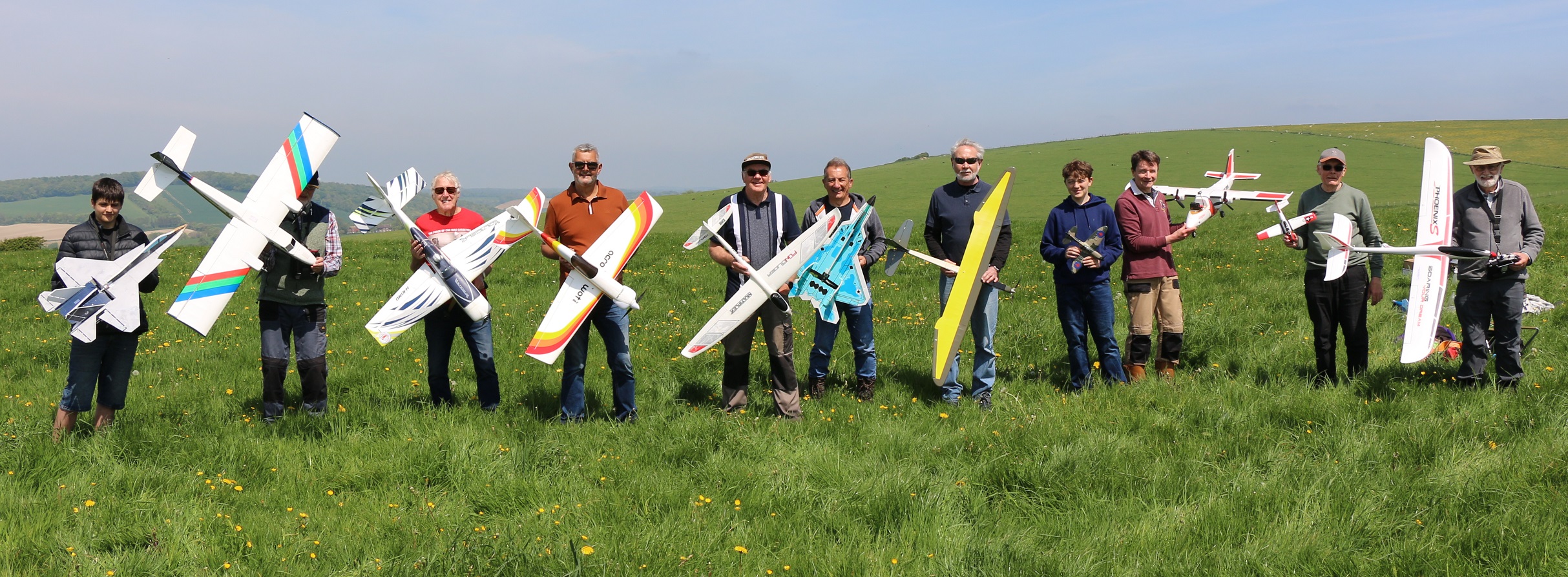 The FPV aircraft captured a video showing 7 aircraft in the frame, we’ve uploaded a still from the camera. A great day had by all, I’m sure we’ll be up for it again next year.
The FPV aircraft captured a video showing 7 aircraft in the frame, we’ve uploaded a still from the camera. A great day had by all, I’m sure we’ll be up for it again next year.
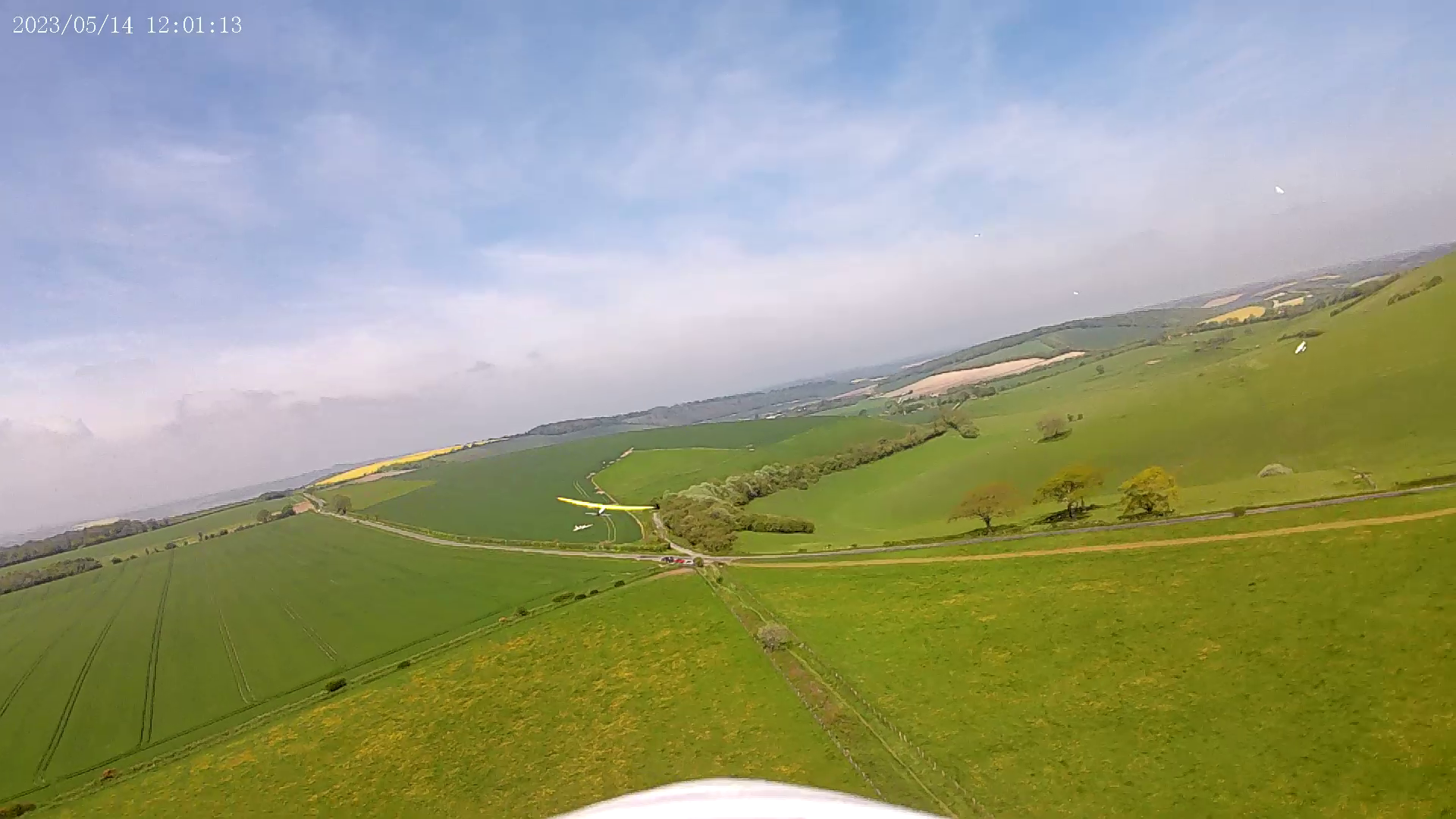 It was the unfortunate Kryten who had last minute radio problems and was unable to fly. Kryten insists the problem turned out to be a dodgy switch and nothing to do with his superior Spektrum radio…! Dougal Entendre flew his FPV model so he was able to film some of the action and it was his screenshot taken from the video in which he has circled 6 of the models so, including his plane that’s 7 of the 11 in the air, not a bad achievement.
It was the unfortunate Kryten who had last minute radio problems and was unable to fly. Kryten insists the problem turned out to be a dodgy switch and nothing to do with his superior Spektrum radio…! Dougal Entendre flew his FPV model so he was able to film some of the action and it was his screenshot taken from the video in which he has circled 6 of the models so, including his plane that’s 7 of the 11 in the air, not a bad achievement. 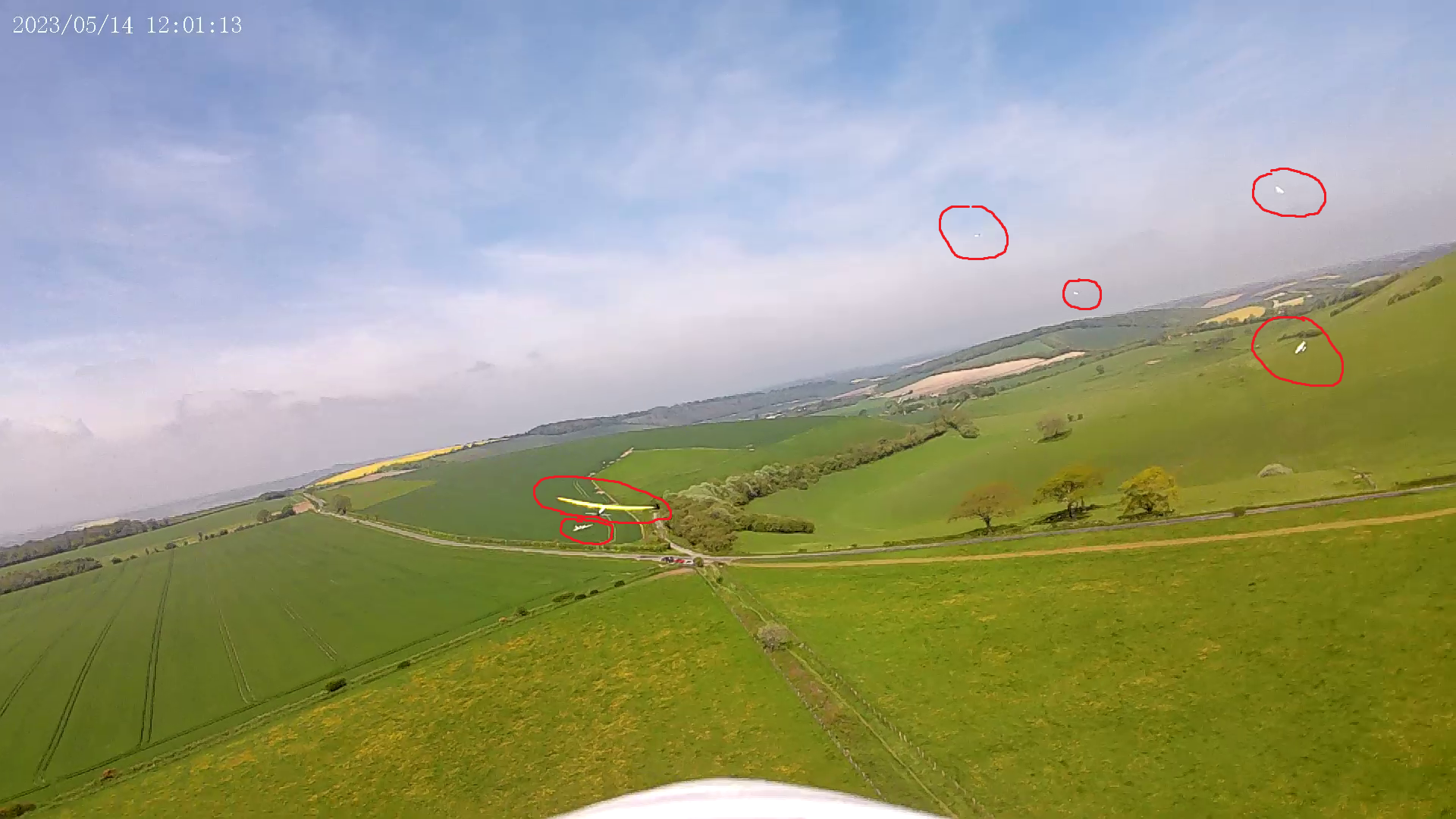 Dougal certainly had plenty of targets of targets to follow and in this month’s video you’ll see footage taken from Dougal’s plane and also some video shot from the ground.
Dougal certainly had plenty of targets of targets to follow and in this month’s video you’ll see footage taken from Dougal’s plane and also some video shot from the ground.
The last time Mini-Mike flew his large Partenavia Victor he incurred a bit of damage to the fibreglass fuselage with a dodgy landing. He managed to complete the necessary and tricky repairs without too much trouble and at the beginning of May he brought it out for a few more flights. However, just a couple of minutes into the first flight of the day one of the motors didn’t appear to be running correctly and he seemed to be getting asymmetric thrust. Mike wisely decided to throttle right back and land immediately rather than risk losing one motor completely and fortunately he was able to land with no damage.
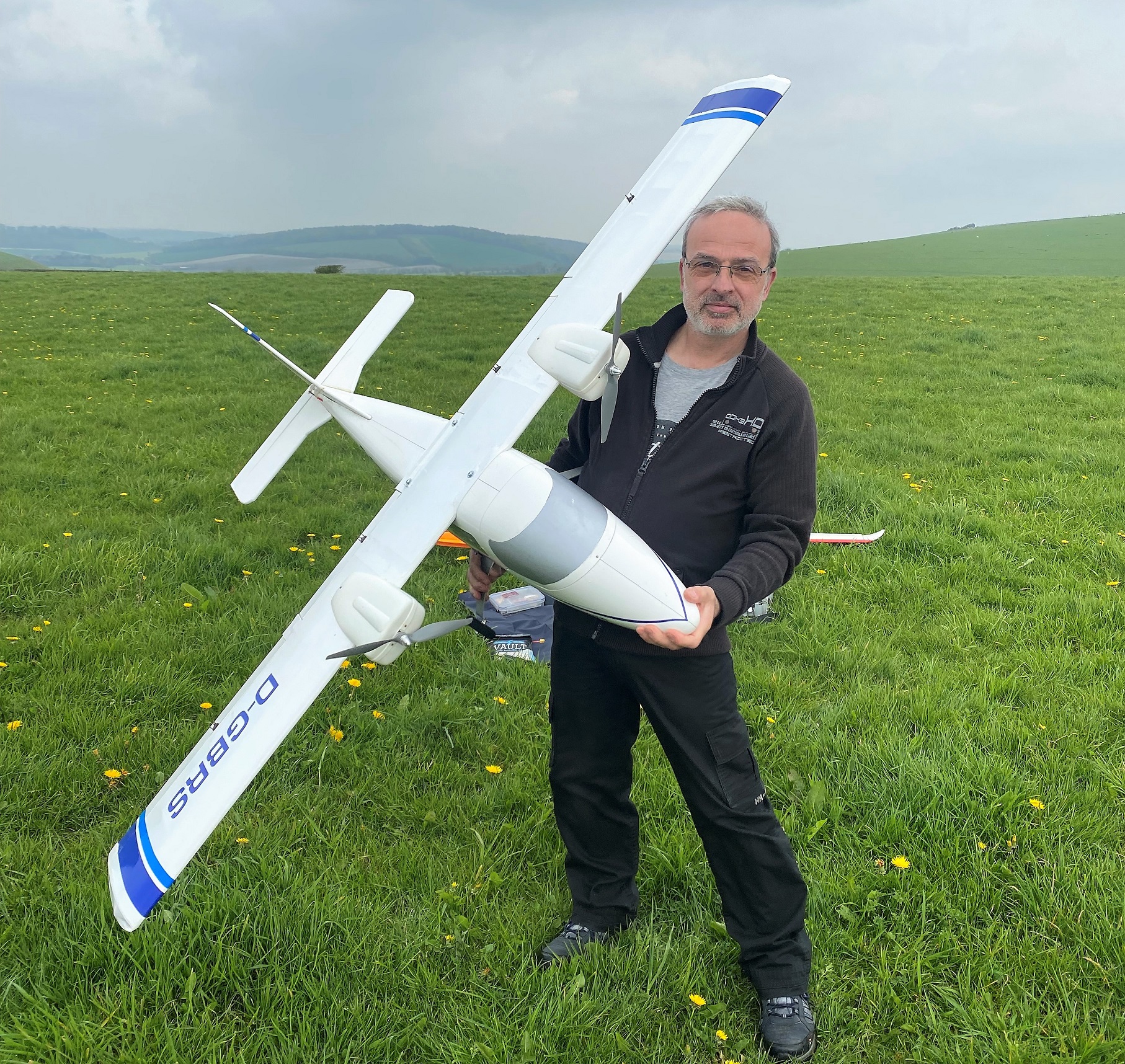 Typically, once back of the ground both motors appeared to run perfectly with no signs of any problems but Mike decided not to risk another flight and took the model off to his workshop to try and figure out what the problem could be.
Typically, once back of the ground both motors appeared to run perfectly with no signs of any problems but Mike decided not to risk another flight and took the model off to his workshop to try and figure out what the problem could be.
Leo is becoming well known in the club for his ability to repair just about any model however badly damaged, and also build new ones in record breaking time. He is always on the lookout for something to repair so if you have any broken planes that you won’t get round to fixing Leo would love to take them off your hands and get them back in the air. In May he built a Phoebe foam model that had been featured in the May edition of RCM&E.
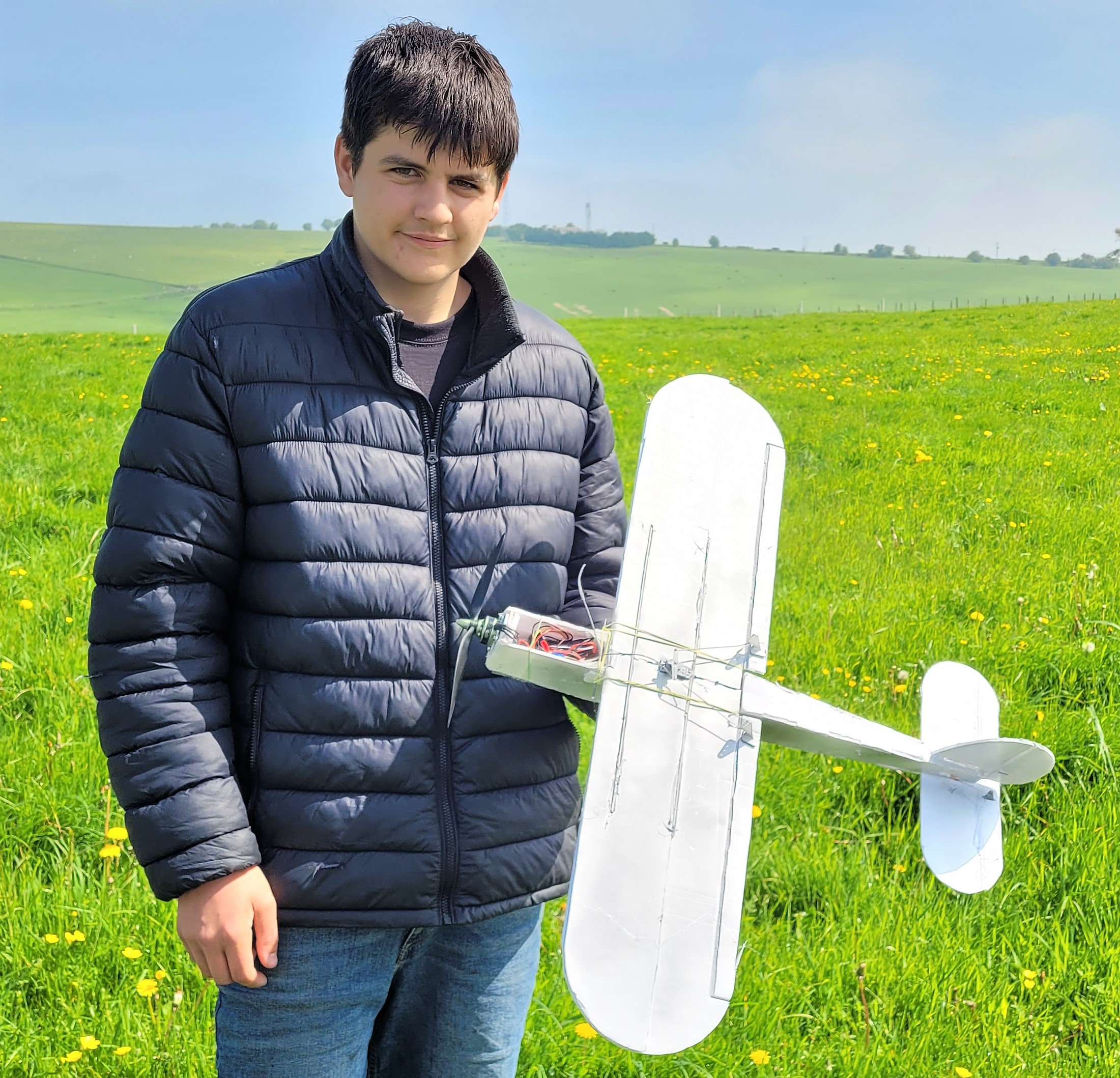 The Phoebe was designed by Bill Bowne and is a simple 29” span high wing trainer type.
The Phoebe was designed by Bill Bowne and is a simple 29” span high wing trainer type.
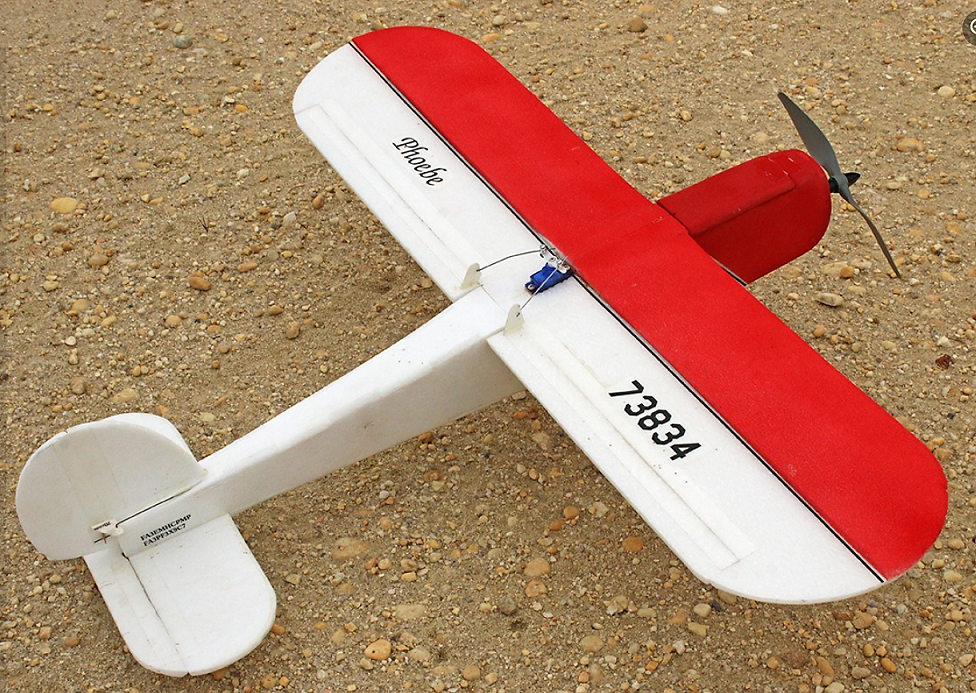 Leo says he thought about building it at 1pm, bought the bits he needed for it at 1.30pm, had it built by 3pm, and flew it at 6pm! Leo fitted his Phoebe with a MultiStar Elite 2204 2300kv motor which seems to provide more than enough go.
Leo says he thought about building it at 1pm, bought the bits he needed for it at 1.30pm, had it built by 3pm, and flew it at 6pm! Leo fitted his Phoebe with a MultiStar Elite 2204 2300kv motor which seems to provide more than enough go.
 I have to say that despite looking rather rushed it seemed to fly very well so if anyone is looking for a cheap and quick to build small model a Phoebe might just be the one to pick.
I have to say that despite looking rather rushed it seemed to fly very well so if anyone is looking for a cheap and quick to build small model a Phoebe might just be the one to pick.
Quiz time now: Your planes probably use 3 or 4 cells, possibly 6 cells but it’s unlikely to be more, and they can fly at full throttle for around 5 minutes. So what electric plane uses 6480 cells and can fly for around 8 minutes at full throttle? The Spirit of Innovation!
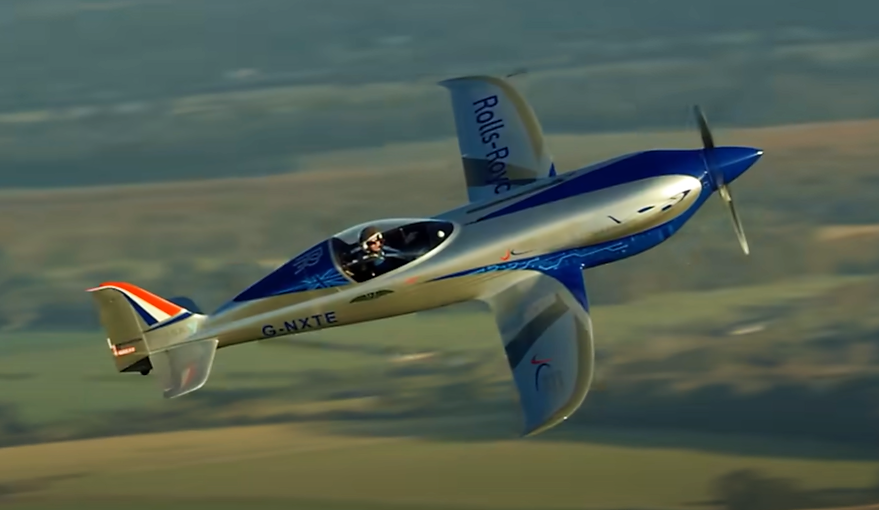 The cells are 18650 (18mm dia x 65mm long) and are made into 3 packs of 756V 24kWh.
The cells are 18650 (18mm dia x 65mm long) and are made into 3 packs of 756V 24kWh. 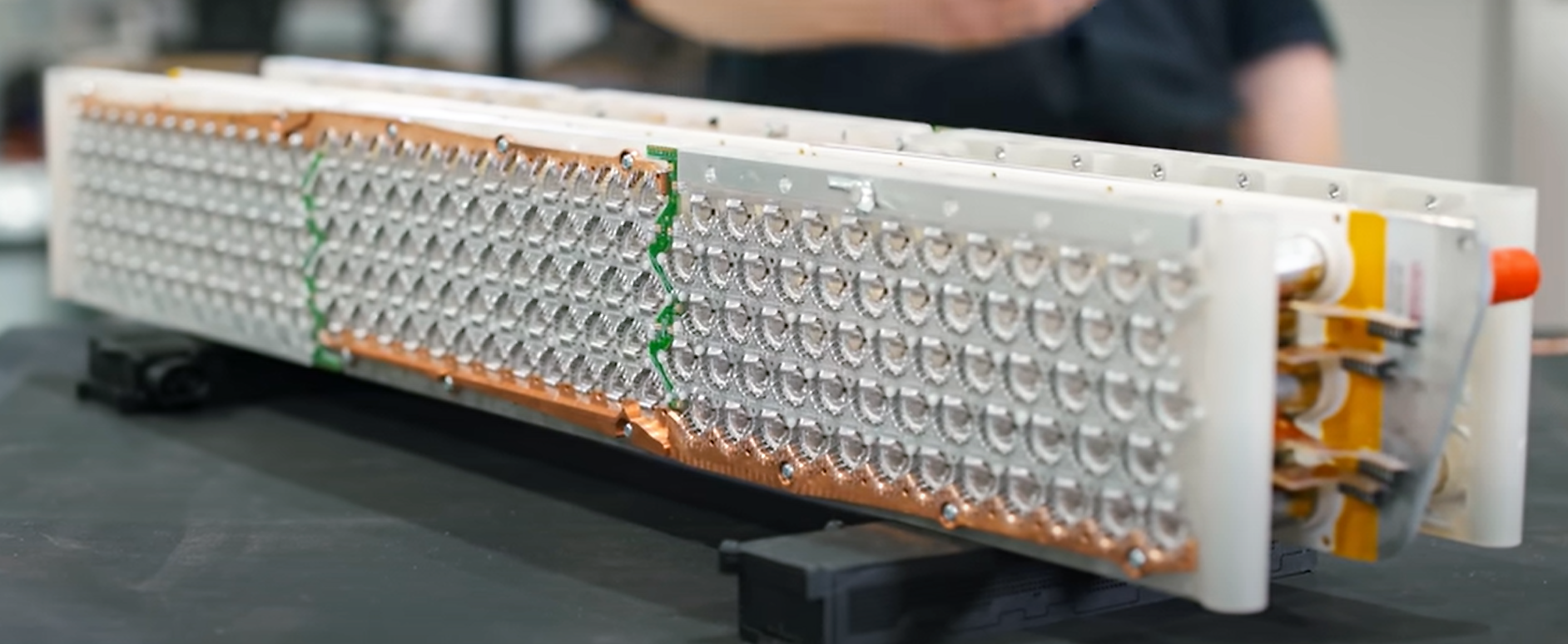 For comparison a 2200mAh 3 cell lipo is 0.02442kWh. The plane was designed and built to break the electric powered air speed record which it now holds at 345mph. Take a look at this fourteen minute video for more information about the plane and how it’s powered.
For comparison a 2200mAh 3 cell lipo is 0.02442kWh. The plane was designed and built to break the electric powered air speed record which it now holds at 345mph. Take a look at this fourteen minute video for more information about the plane and how it’s powered.
Chairman Gordon Bennett finished building and flew a Flair Cub in May so I asked him to write a report on how his first balsa build went, over to Gordon: I’ve always liked the Jet Provost. On my 40th birthday I was lucky enough to get a trip in one, but that story is for another time, perhaps over a pint, do we dare have another club meeting?!
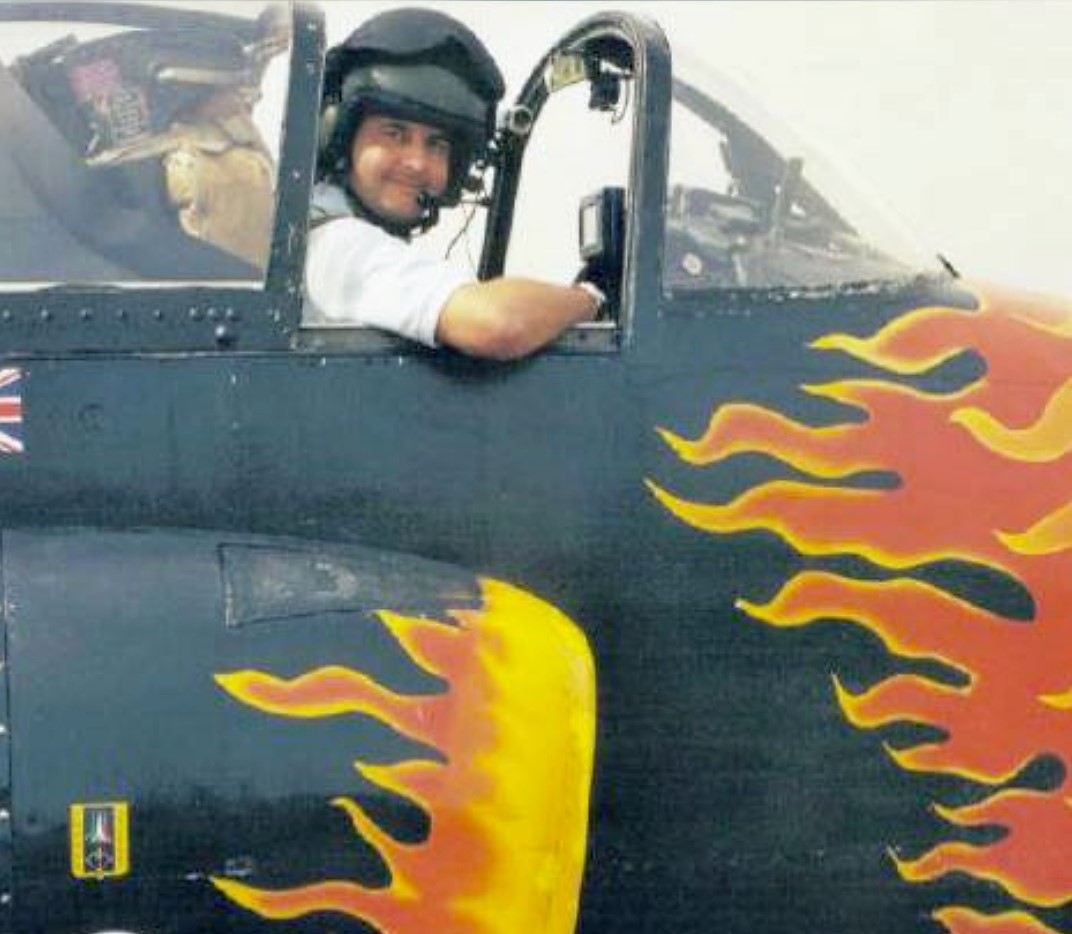 So, for my 60th birthday I asked my friends if they would buy various bits on the Tony Nijhuis 70mm EDF Provost as I was determined to build one. Unfortunately, I got three port wings a tailplane and no fuselage so it’s going to look a bit odd…only kidding.
So, for my 60th birthday I asked my friends if they would buy various bits on the Tony Nijhuis 70mm EDF Provost as I was determined to build one. Unfortunately, I got three port wings a tailplane and no fuselage so it’s going to look a bit odd…only kidding.
This being my first kit I decided to take advice from the worthy PAM ‘builders’ and Dwayne Pipe’s initial reaction was ‘take your time and perhaps start with something a little simpler to learn basic building skills’. I followed his advice to the letter and did absolutely nothing for the next six months.
By chance the club was then contacted by a gent from Liss who said he had a Flair Cub kit that he had given up with and was up for grabs. He had everything for the airframe and had started work on the fuselage but then, for whatever reason, decided not to progress further. On collecting it I was immediately surprised on how big the box was, it’s hardly a large-scale model but bigger than what I’d anticipated.
Thinking again about Dwayne’s advice I did nothing for another three months.
Finally, I got fed up moving the box around my garage and decided with spring now upon us I should get stuck in.
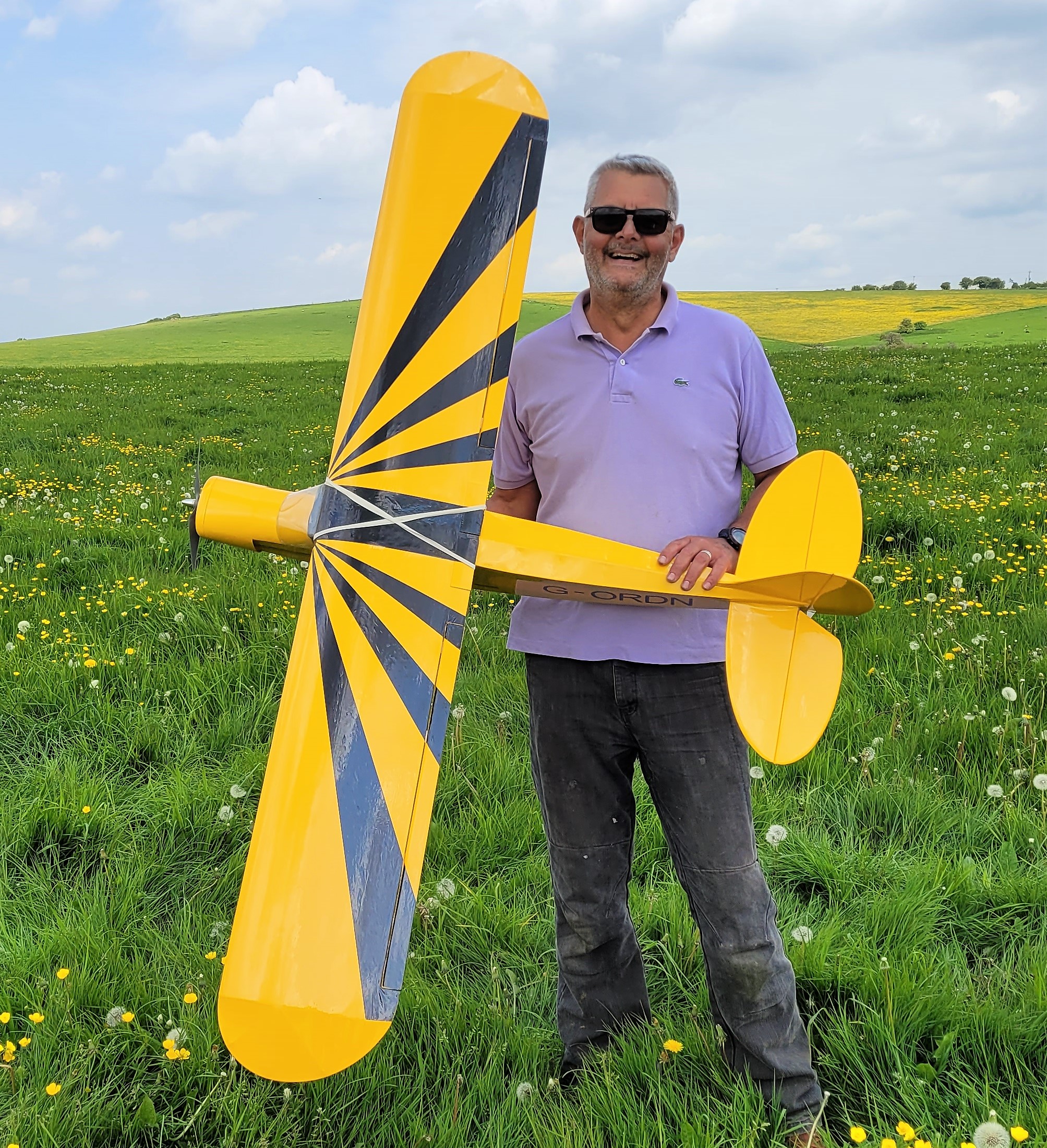 First up finish the fuselage. The kit is really old. I mean really old, perhaps around 10 BC, or more properly 10 BCC (before Colin Cowplain). See what I mean, really old.
First up finish the fuselage. The kit is really old. I mean really old, perhaps around 10 BC, or more properly 10 BCC (before Colin Cowplain). See what I mean, really old.
(Oi, I have a long memory you know, really long! – CC). All of the balsa had a strange powdery coating and the glue wouldn’t adhere so a clean-up of all parts was required.
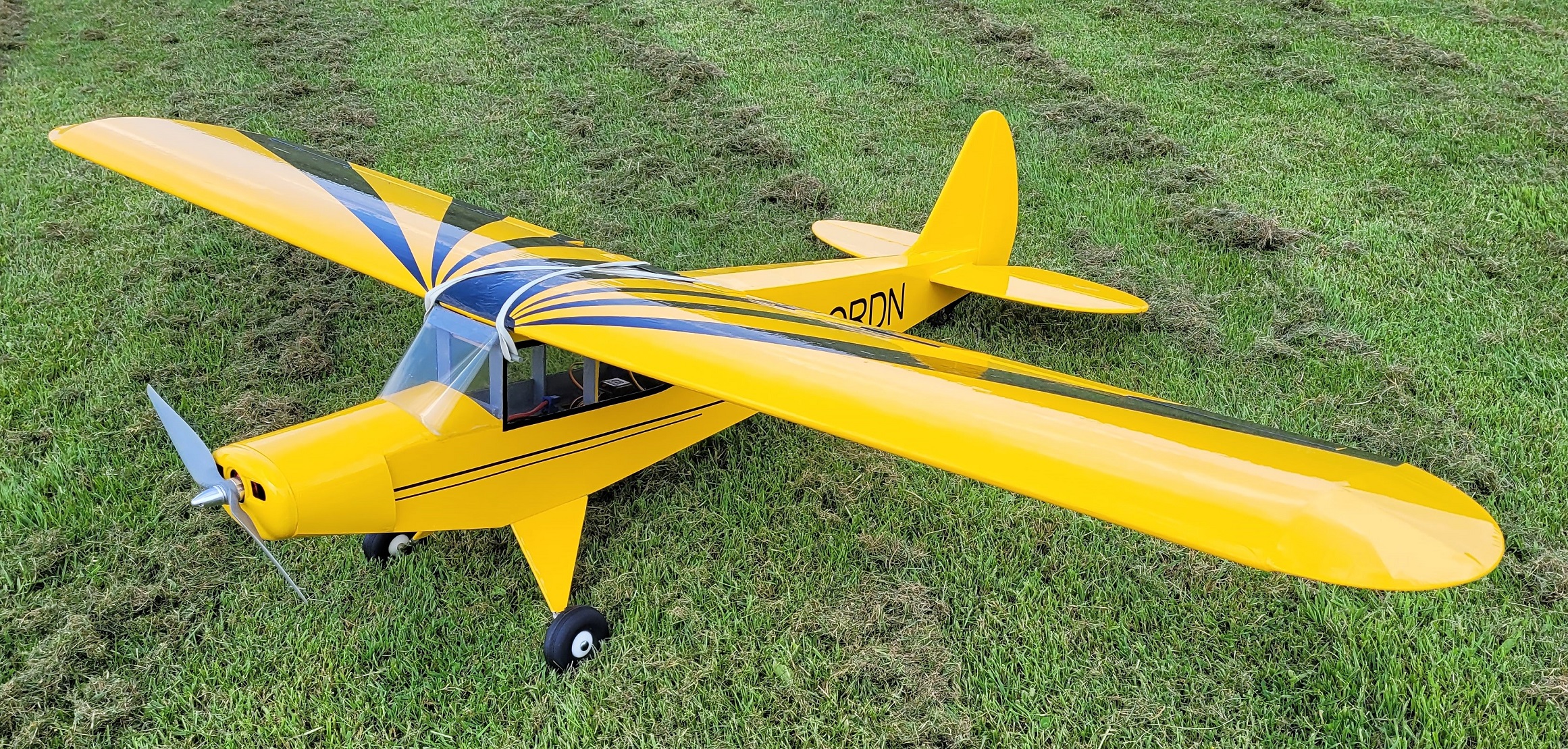 Next to the wings. Super simple as they’re a foam core with balsa skin, the tips are just made up from ribs. The wing jointing kit is glass cloth and epoxy but as it was so old the epoxy had gone off. Being an important structural part, I bought new epoxy and then realised the 6 foot wingspan meant I couldn’t fit the assembled wings on my workbench.
Next to the wings. Super simple as they’re a foam core with balsa skin, the tips are just made up from ribs. The wing jointing kit is glass cloth and epoxy but as it was so old the epoxy had gone off. Being an important structural part, I bought new epoxy and then realised the 6 foot wingspan meant I couldn’t fit the assembled wings on my workbench.
Tailplane, rudder and elevators are built up from solid balsa, so again, quick and simple.
The main problem was powertrain. Being an old design, before electricity was invented, the plans suggested a .30 Irvine. I went for a Ripmax Quantum II 36 brushless with a 60 amp ESC and 10×8 prop. The original engine bearers were lateral so I had to chop the front of the model off and install a new bulkhead to take the electric engine. The bulkhead is 3mm lite-ply and, at this, Dougal raised an eyebrow suggesting 6mm might be better. Having already installed it I slapped a bit more epoxy around to strengthen things.
Electronics are all Spektrum, only the best will do. (Now we know you’re joking! – CC)
 The original purchaser had also given me two rolls of Solartex (red and white) so I set about my first attempt at covering. First, the bottle of Balsa-Loc was solid so a new one was purchased, and then, still when nothing would stick, I realised the glue on the Solartex had gone off too!
The original purchaser had also given me two rolls of Solartex (red and white) so I set about my first attempt at covering. First, the bottle of Balsa-Loc was solid so a new one was purchased, and then, still when nothing would stick, I realised the glue on the Solartex had gone off too!
I bought a couple of rolls of Oracover film instead and decided to go ‘Cub Yellow’. The end result certainly isn’t perfect but it was my first attempt and was amazed what a great material it is to work with. Some limited detailing went on and I decided to fit the registration G-ORDN. (I can’t get that song “Gordon is a moron” out of my head! – CC)
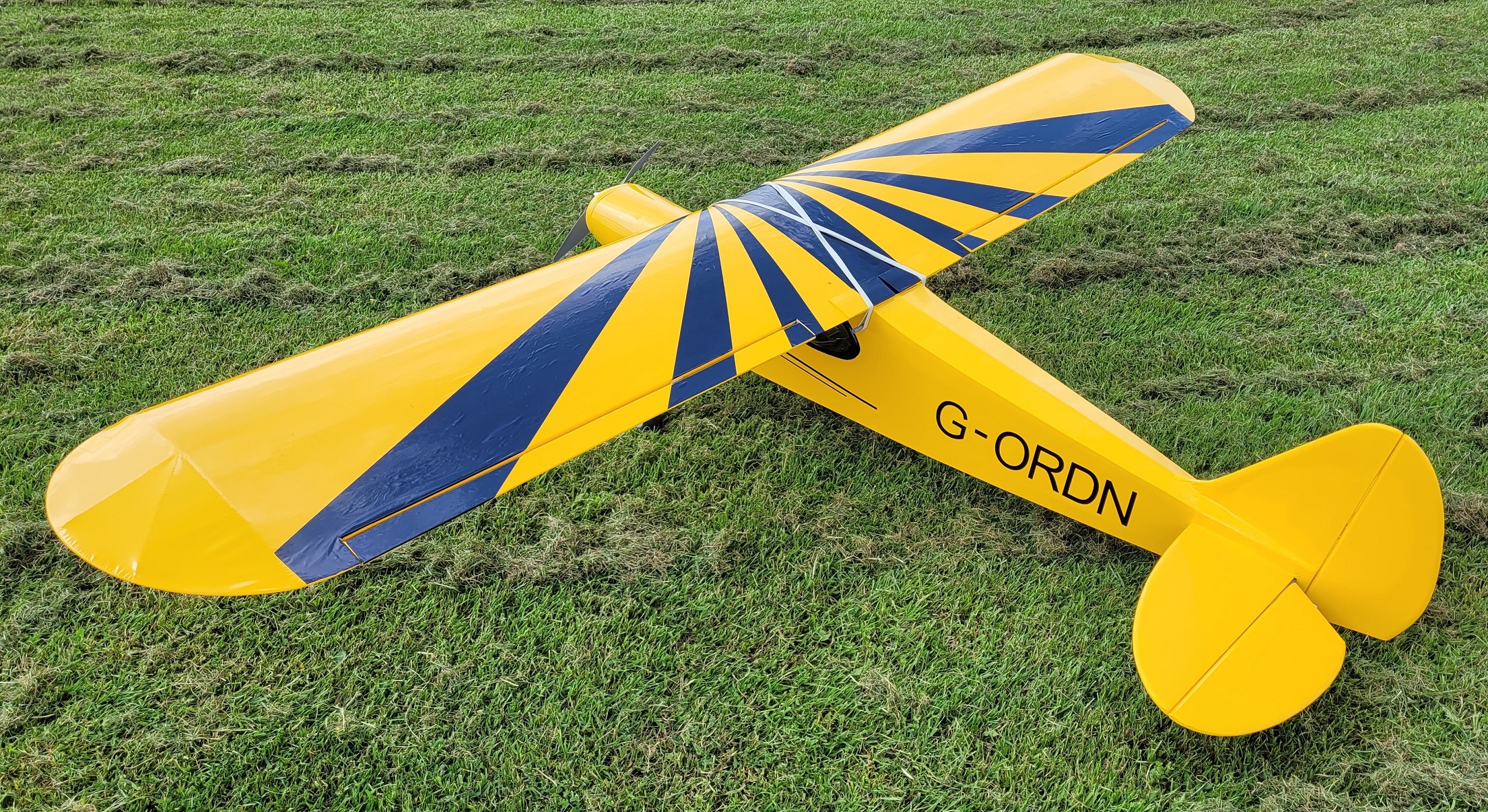 Cutting and fitting the windscreen from acetate sheet was a nightmare but I’m over it now. All the last touches and fiddly servo bits took a while but eventually she was ready.
Cutting and fitting the windscreen from acetate sheet was a nightmare but I’m over it now. All the last touches and fiddly servo bits took a while but eventually she was ready.
Except she wasn’t. Even with the battery virtually on top of the engine, the C of G was about an inch too rearward. I took the model up to the patch to seek the advice of Colin Cowplain. He wasn’t happy about the C of G situation so I strapped and old 3S 2200 Lipo underneath the engine cowling and this sorted things out.
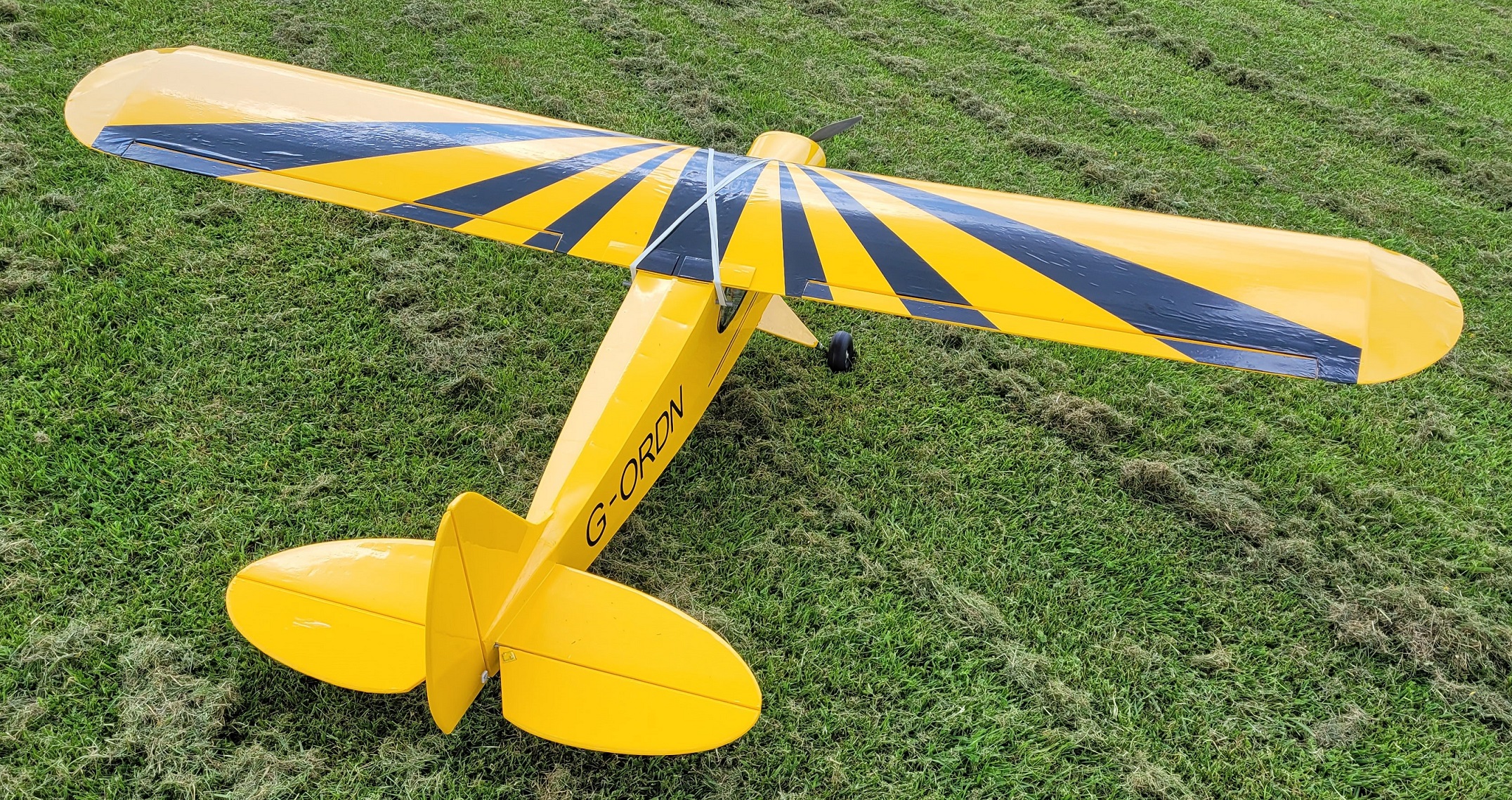 Cowplain took her up for the first flight and all seemed reasonable. Colin thinks she’s a bit overpowered and could do with a larger diameter prop. The engine could do with a bit of ‘up’ and ‘right’ thrust but this will be easy as I used stand-off bolts on the bulkhead. I also want to cut a hatch for the battery as at the moment you can only access it by taking the wings off.
Cowplain took her up for the first flight and all seemed reasonable. Colin thinks she’s a bit overpowered and could do with a larger diameter prop. The engine could do with a bit of ‘up’ and ‘right’ thrust but this will be easy as I used stand-off bolts on the bulkhead. I also want to cut a hatch for the battery as at the moment you can only access it by taking the wings off.
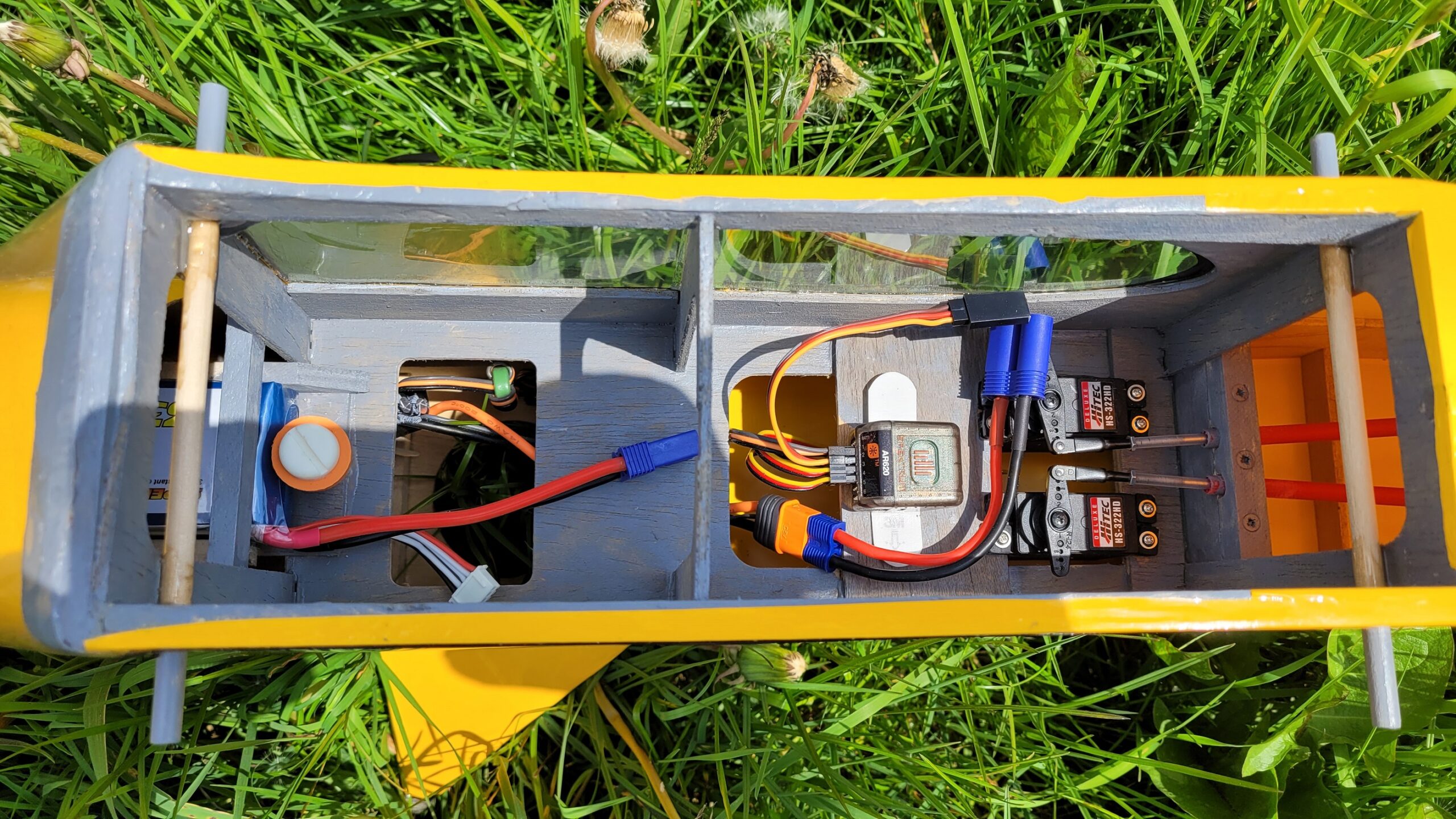 To sort the C of G I’ll need to put about 160 grams of lead in the nose (the whole model weighs about 2.5 Kg). Mini Mike suggested using ‘car wheel balancing’ lead and said he could get me a couple. Failing that there’s always the church roof.
To sort the C of G I’ll need to put about 160 grams of lead in the nose (the whole model weighs about 2.5 Kg). Mini Mike suggested using ‘car wheel balancing’ lead and said he could get me a couple. Failing that there’s always the church roof.
The test flight should feature on Patch News this month. You’ll see Cowplain had handed the controls back to me and I decided to test the ‘Bush’ credentials of the Cub by landing so late on the patch that I was into the long grass. (It’s OK Gordon, I’ve cut that bit and used your second landing to spare your blushes – CC). Things did improve from there!
That’s my first ‘build’ completed, and I have to say I feel a small sense of achievement. It’s quite terrifying that all the hard work could be undone by a crash but I guess it’s all part of the fun. Now to crack on with the Provost, should be ready by the end of the decade.
With the return of Kryten to the field this month comes some of his superb action photos:
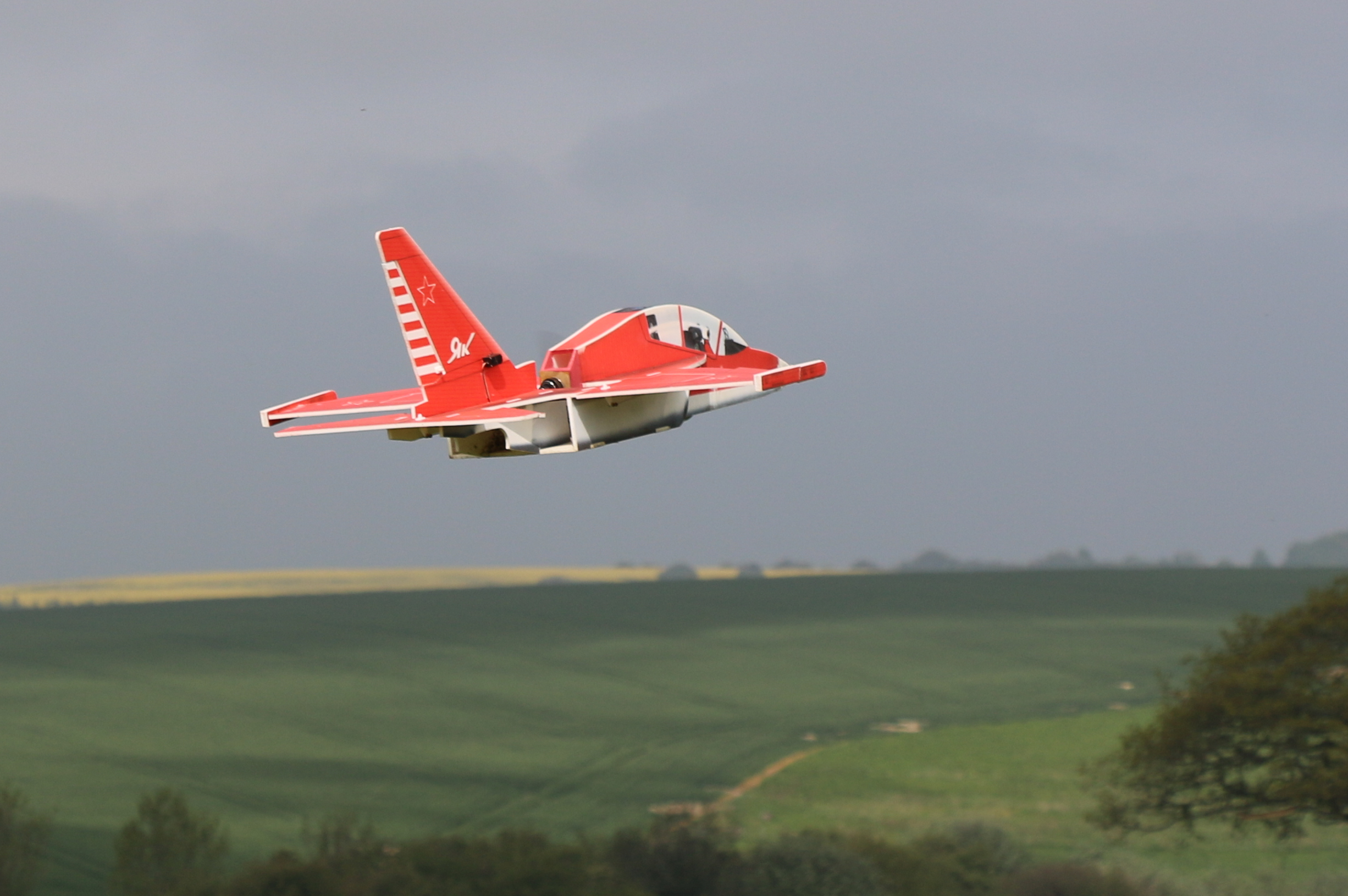
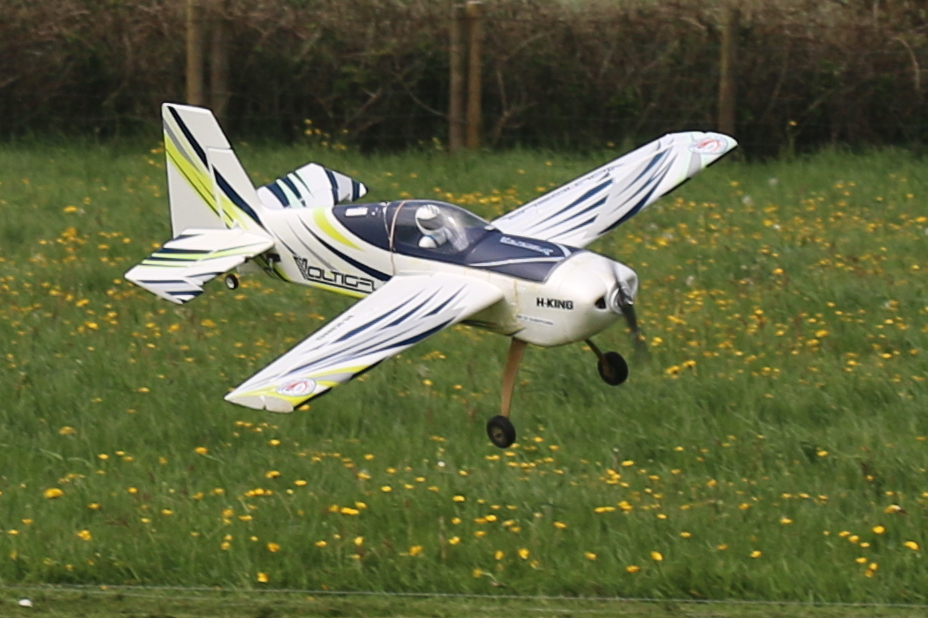
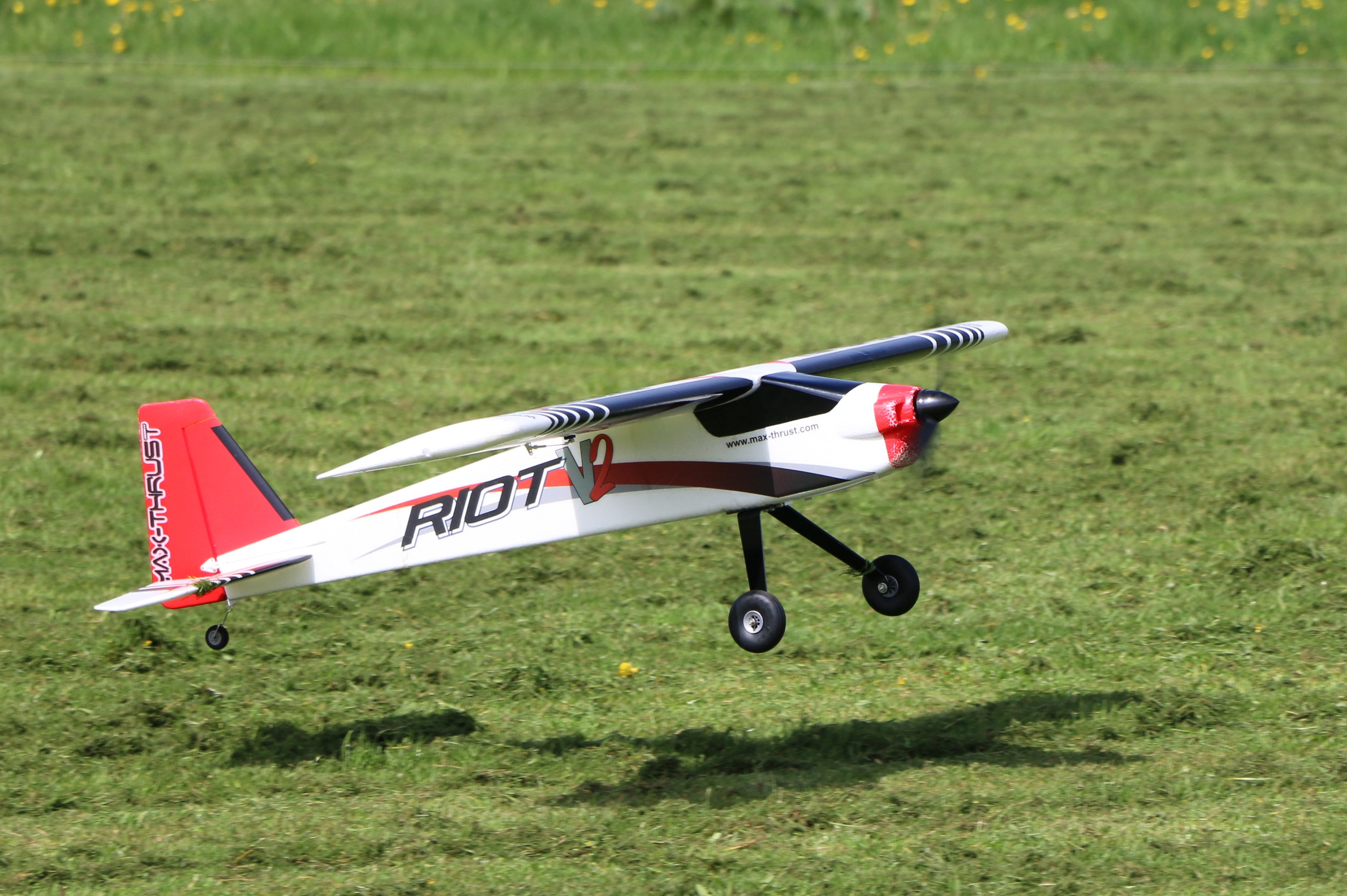
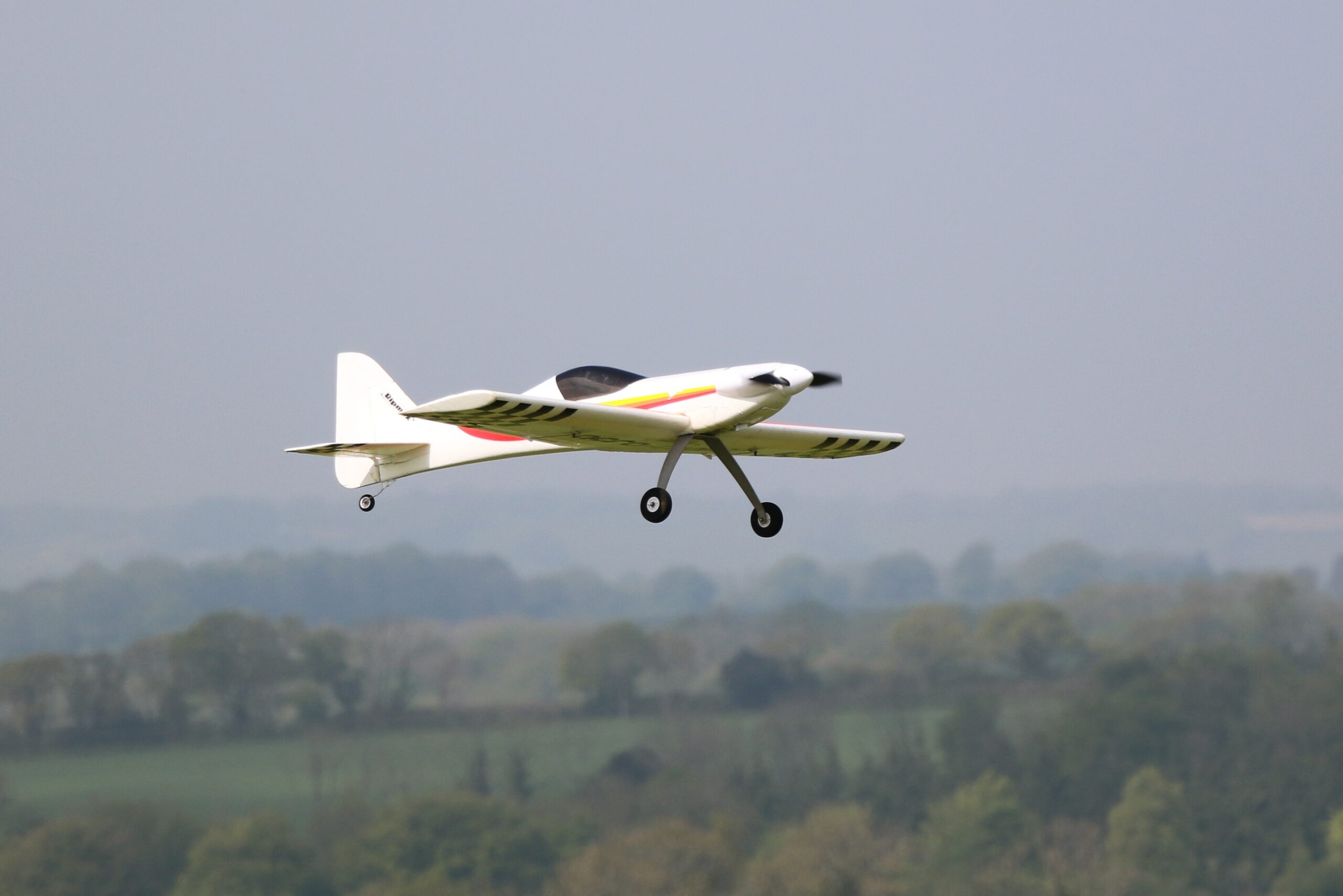
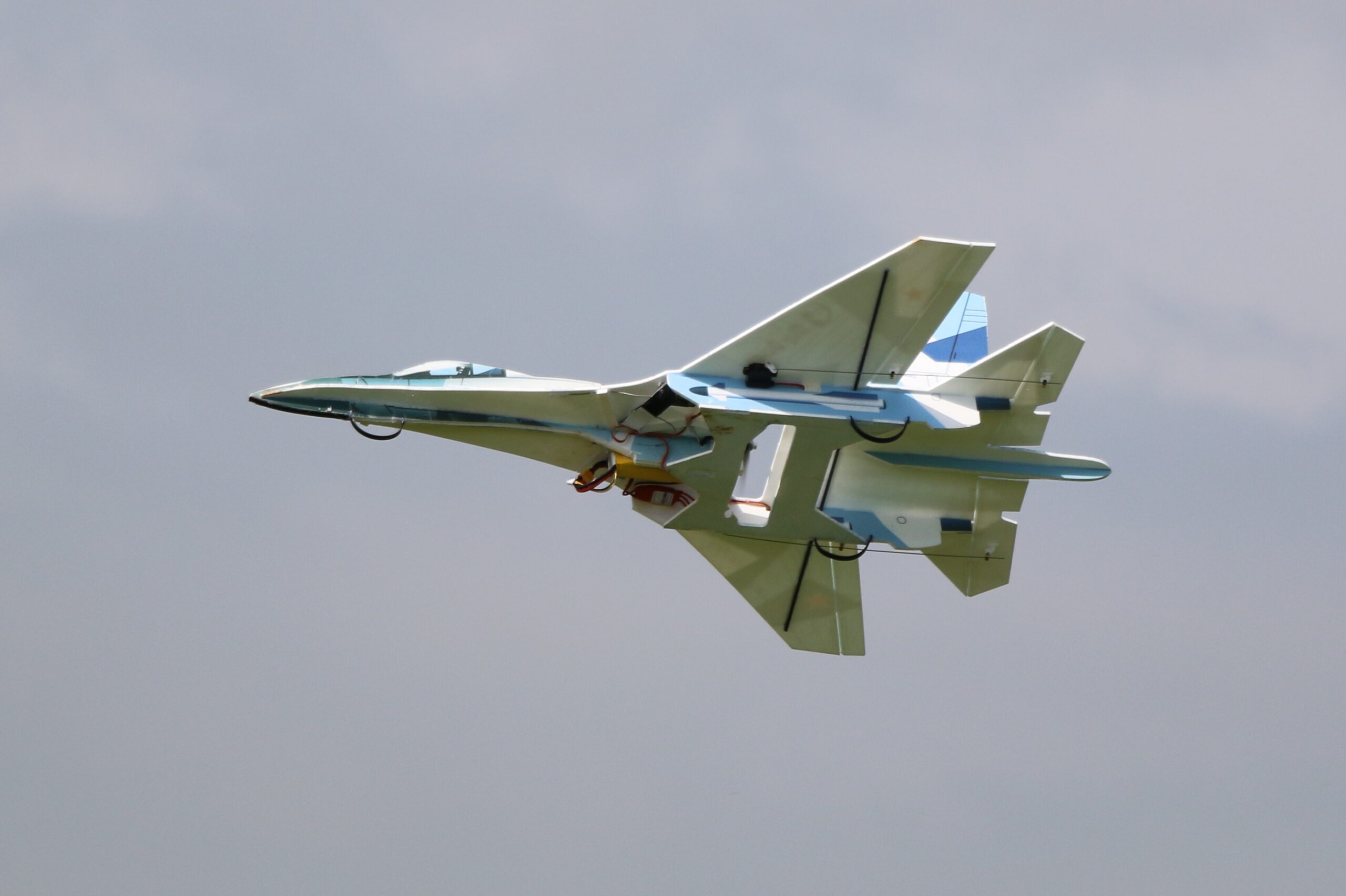 Video time now with footage by me, Dougal Entendre, Kryten, Nadine, and Peter F.
Video time now with footage by me, Dougal Entendre, Kryten, Nadine, and Peter F.
Please watch the video full-screen, it’s so much better with small models flying around.
If the video won’t play for you please click HERE
An airline stewardess was out golfing one day when she sliced her ball into the woods.
When she went into the woods to look for the ball she found a frog caught in a trap.
The frog said to her “If you release me from this trap, I will grant you three wishes”.
So she freed the frog who said, “Thanks, but I failed to mention that there was a condition, whatever you wish for your Captain will get ten times more or better!”
The stewardess said, “That’s ok, I can live with that” and she made her first wish which was that she wanted to be the most beautiful stewardess in the world.
The frog warned her, “You do realize that this wish will also make your Captain the most handsome pilot in the world, an Adonis that all the other stewardesses will flock to.”
She replied, “That’s ok, I will be the most beautiful one and he will only have eyes for me.”
So, KAZAM – she became the most beautiful stewardess in the world!
For her second wish she wanted to be the richest stewardess in the world.
The frog said, “That will make your Captain the richest pilot in the world and he will be ten times richer than you.” The stewardess said, “That’s ok because I’m such a devoted stewardess that what’s mine is also my Captain’s and what is my Captain’s is also mine.” So, KAZAM she’s the richest stewardess in the world!
The frog then inquired about her third wish. She thought about it for a minute, then said “I’d like to have a mild heart attack…”
Moral: Stewardesses are smart, don’t mess with them!
Colin Cowplain


Well done CCand GB for this month’s
literary masterpiece , thought I was
reading War and Peace. Good job Boys.
also many thanks to the other
contributor.
Thanks Woody 🙂
Thanks for another great Patch News Colin!
Gordon’s Cub looks lovely, but if it’s overpowered I think a smaller prop may be the answer rather than a larger one. I know we used to overprop ic engines to get them below the noise limit (sometimes to the point where they wouldn’t pull the skin off a rice pudding), but my understanding is that electrics are different. The motor always tries to turn the prop at a speed equal to the volts times the kv, so a larger prop might actually result in more power, and a more stressed motor/esc. A better solution might be to go for the same diameter prop but lower pitch.
When I read what Gordon said I thought it sounded a bit odd! It has plenty of power but not too much. It flew fine and will stooge around on half throttle easily enough but soon Gordon will be looping and rolling. I said to try a larger diameter but lower pitch prop, he doesn’t want more speed.